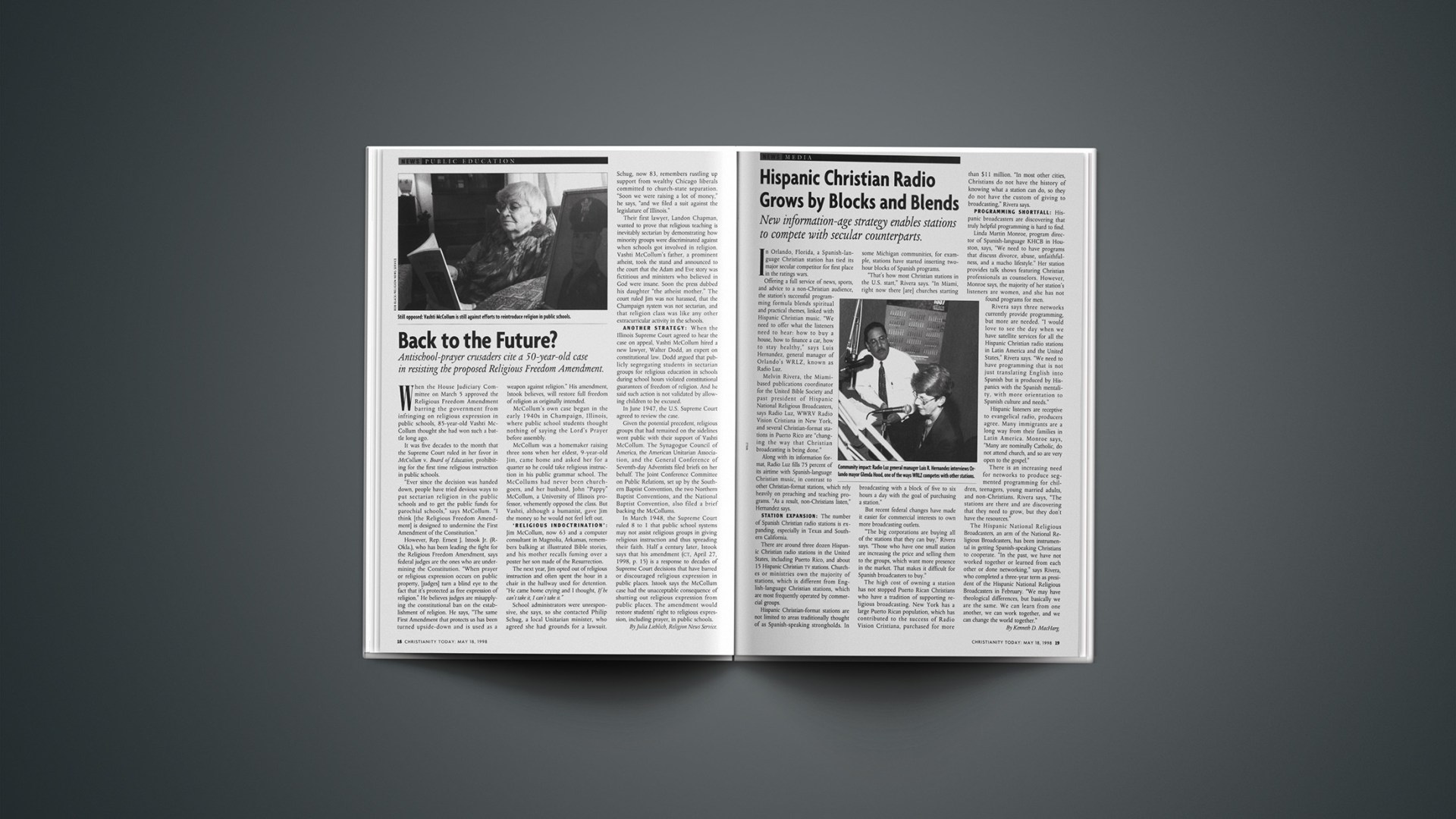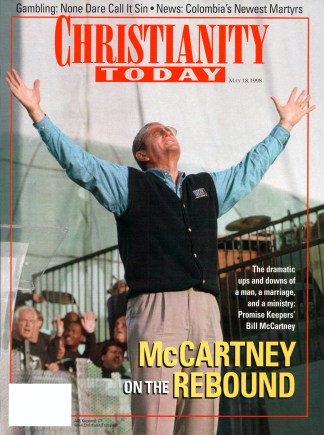When the House Judiciary Committee on March 5 approved the Religious Freedom Amendment barring the government from infringing on religious expression in public schools, 85-year-old Vashti McCollum thought she had won such a battle long ago.
It was five decades to the month that the Supreme Court ruled in her favor in McCollum v. Board of Education, prohibiting for the first time religious instruction in public schools.
“Ever since the decision was handed down, people have tried devious ways to put sectarian religion in the public schools and to get the public funds for parochial schools,” says McCollum. “I think [the Religious Freedom Amendment] is designed to undermine the First Amendment of the Constitution.”
However, Rep. Ernest J. Istook Jr. (R-Okla.), who has been leading the fight for the Religious Freedom Amendment, says federal judges are the ones who are undermining the Constitution. “When prayer or religious expression occurs on public property, [judges] turn a blind eye to the fact that it’s protected as free expression of religion.” He believes judges are misapplying the constitutional ban on the establishment of religion. He says, “The same First Amendment that protects us has been turned upside-down and is used as a weapon against religion.” His amendment, Istook believes, will restore full freedom of religion as originally intended.
McCollum’s own case began in the early 1940s in Champaign, Illinois, where public school students thought nothing of saying the Lord’s Prayer before assembly.
McCollum was a homemaker raising three sons when her eldest, 9-year-old Jim, came home and asked her for a quarter so he could take religious instruction in his public grammar school. The McCollums had never been church-goers, and her husband, John “Pappy” McCollum, a University of Illinois professor, vehemently opposed the class. But Vashti, although a humanist, gave Jim the money so he would not feel left out.
‘RELIGIOUS INDOCTRINATION’: Jim McCollum, now 63 and a computer consultant in Magnolia, Arkansas, remembers balking at illustrated Bible stories, and his mother recalls fuming over a poster her son made of the Resurrection.
The next year, Jim opted out of religious instruction and often spent the hour in a chair in the hallway used for detention. “He came home crying and I thought, If he can’t take it, I can’t take it.“
School administrators were unresponsive, she says, so she contacted Philip Schug, a local Unitarian minister, who agreed she had grounds for a lawsuit. Schug, now 83, remembers rustling up support from wealthy Chicago liberals committed to church-state separation. “Soon we were raising a lot of money,” he says, “and we filed a suit against the legislature of Illinois.”
Their first lawyer, Landon Chapman, wanted to prove that religious teaching is inevitably sectarian by demonstrating how minority groups were discriminated against when schools got involved in religion. Vashti McCollum’s father, a prominent atheist, took the stand and announced to the court that the Adam and Eve story was fictitious and ministers who believed in God were insane. Soon the press dubbed his daughter “the atheist mother.” The court ruled Jim was not harassed, that the Champaign system was not sectarian, and that religion class was like any other extracurricular activity in the schools.
ANOTHER STRATEGY: When the Illinois Supreme Court agreed to hear the case on appeal, Vashti McCollum hired a new lawyer, Walter Dodd, an expert on constitutional law. Dodd argued that publicly segregating students in sectarian groups for religious education in schools during school hours violated constitutional guarantees of freedom of religion. And he said such action is not validated by allowing children to be excused.
In June 1947, the U.S. Supreme Court agreed to review the case.
Given the potential precedent, religious groups that had remained on the sidelines went public with their support of Vashti McCollum. The Synagogue Council of America, the American Unitarian Association, and the General Conference of Seventh-day Adventists filed briefs on her behalf. The Joint Conference Committee on Public Relations, set up by the Southern Baptist Convention, the two Northern Baptist Conventions, and the National Baptist Convention, also filed a brief backing the McCollums.
In March 1948, the Supreme Court ruled 8 to 1 that public school systems may not assist religious groups in giving religious instruction and thus spreading their faith. Half a century later, Istook says that his amendment (CT, April 27, 1998, p. 15) is a response to decades of Supreme Court decisions that have barred or discouraged religious expression in public places. Istook says the McCollum case had the unacceptable consequence of shutting out religious expression from public places. The amendment would restore students’ right to religious expression, including prayer, in public schools.
Copyright © 1998 Christianity Today. Click for reprint information.










